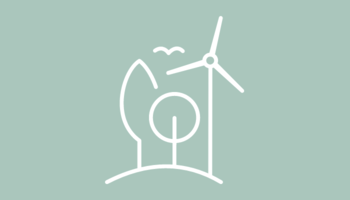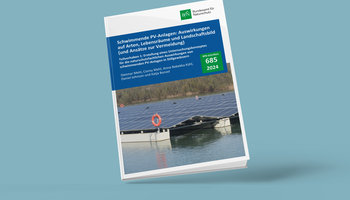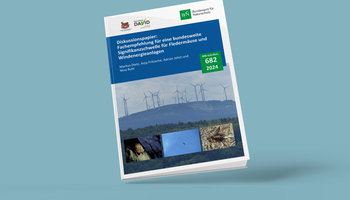In view of the climate crisis, the German Federal government has set itself the goal of increasing the share of renewable energies in gross electricity consumption to at least 80 % by 2030 and to 100 % by 2035. This means, among other things, that there is an urgent need for the rapid expansion of onshore wind energy. In addition to the two-percent target for land provision, the permitting process for wind turbines is to be significantly accelerated. Against the background of the coalition agreement and the need to accelerate the expansion of renewable energies, the Fourth Act Amending the Federal Nature Conservation Act (BNatSchG) has now also standardised, among other things, the assessment under species protection law throughout Germany.
The current Fourth Act Amending the Federal Nature Conservation Act (BNatSchG) of 20 July 2022 regulated, among other things, provisions on the operation of onshore wind energy plants pursuant to §§ 45b, c, d BNatSchG in conjunction with Annex 1 and 2:
Against the background of facilitating the implementation of the amendment at the planning and approval level, the aim of the project is a comprehensive interpretation and concretisation of the new provisions in the BNatSchG.
Kurzpapier: Artenschutz und Windenergieausbau – Zumutbarkeit von Schutzmaßnahmen nach Anlage 2 BNatSchG und § 6 WindBG – Analyse von Fallkonstellationen erarbeitet im Rahmen des BfN F+E-Vorhabens „Artenschutz und Windenergieausbau an Land – Neuregelung des BNatSchG“ (Stand: Februar 2024)
RED: Auseinandersetzung mit rechtlichen und fachlichen Fragen, erarbeitet im Rahmen des BfN F+E-Vorhabens Artenschutz und Windenergieausbau an Land – Neuregelung des BNatSchG. Marcus Lau, Katrin Wulfert, Lydia Vaut, Heiko Köstermeyer, Jan Blew (Stand: Februar 2024)
Artenschutz und Windenergieausbau - Anordnung von Minderungsmaßnahmen bei der Genehmigung von WEA in Windenergiegebieten, die den Voraussetzungen des § 6 WindBG entsprechen, erarbeitet im Rahmen des BfN F+E-Vorhabens Artenschutz und Windenergieausbau an Land – Neuregelung des BNatSchG (2. Fassung vom 21.09.2023)
Artenschutz und Windenergieausbau - Berücksichtigung artenschutzrechtlicher Belange bei der Ausweisung von Windenergiegebieten auf Ebene der Regionalplanung, erarbeitet im Rahmen des BfN F+E-Vorhabens Artenschutz und Windenergieausbau an Land – Neuregelung des BNatSchG (2. Fassung vom 13.07.2023)
Einführung einer probabilistischen Methode zur Ermittlung der signifikanten Erhöhung des Tötungsrisikos; Zwischenergebnisse im Rahmen des BfN F+E-Vorhabens Artenschutz und Windenergieausbau an Land – Neuregelung des BNatSchG (Entwurf 23.06.2023)
Sicherung des Erhaltungszustands in der artenschutzrechtlichen Ausnahme - erarbeitet im Rahmen des BfN F+E-Vorhabens Artenschutz und Windenergieausbau an Land – Neuregelung des BNatSchG, erarbeitet im Rahmen des BfN F+E-Vorhabens Artenschutz und Windenergieausbau an Land – Neuregelung des BNatSchG (Entwurf 23.06.2023)
Project managment
Bosch & Partner GmbH
Dr Katrin Wulfert
Kirchhofstr. 2c
D-44623 Herne
www.boschpartner.de
Project partners
Simon & Widdig GbR
Hannah-Arendt-Str. 4
D-35037 Marburg
www.simon-widdig.de
BioConsult SH GmbH & Co. KG
Schobueller Str. 36
D-25813 Husum
www.bioconsult-sh.de
RAe Fuesser & Kollegen dfh
Attorney-at-law Dr Marcus Lau
Martin-Luther-Ring 12
D-04109 Leipzig
www.fuesser.de
OekoFor GbR
Kartaeuserstr. 39a
D-79102 Freiburg
www.oekofor.de
Funding
Federal Agency for Nature Conservation (BfN)
Branch Leipzig
Alte Messe 6
D-04013 Leipzig
Asja Weber
Tel: 0049 341 30977-174
asja.weber(at)bfn.de
03.04.2024
Weiter

03.04.2024
Weiter

19.03.2024
Weiter
